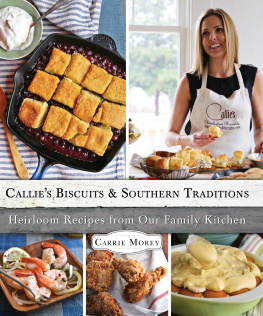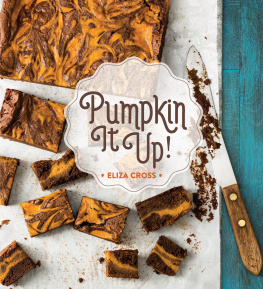Who put the [ DEVIL ]
in DEVILED EGGS?
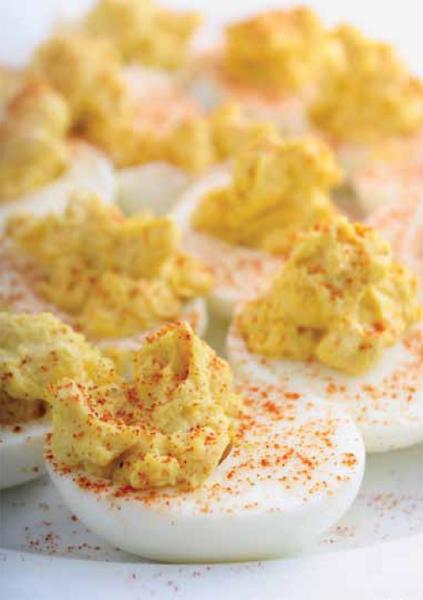
Who put the [DEVIL]
in DEVILED EGGS?

THE FASCINATING STORIES BEHIND AMERICA'S
FAVORITE FOODS
ANN TREISTMAN
To LeAnna Weller Smith, the best designer in the world!
With thanks to Meg Distinti and Kristin Kulsavage.
Copyright 2011 by Ann Treistman
All Rights Reserved. No part of this book may be reproduced in any manner without the express written consent of the publisher, except in the case of brief excerpts in critical reviews or articles. All inquiries should be addressed to Skyhorse Publishing, 307 West 36th Street, 11th Floor, New York, NY 10018.
Skyhorse Publishing books may be purchased in bulk at special discounts for sales promotion, corporate gifts, fund-raising, or educational purposes. Special editions can also be created to specifications. For details, contact the Special Sales Department, Skyhorse Publishing, 307 West 36th Street, 11th Floor, New York, NY 10018 or info@skyhorsepublishing.com .
www.skyhorsepublishing.com
10 9 8 7 6 5 4 3 2 1
Library of Congress Cataloging-in-Publication Data is available on file.
ISBN: 978-1-60239-742-2
Printed in China
TELL ME WHAT YOU EAT AND
I WILL TELL YOU WHAT YOU ARE.
Jean Anthelme Brillat-Savarin,
The Physiology of Taste (1825)
THE MOST REMARKABLE THING ABOUT MY
MOTHER IS THAT FOR THIRTY YEARS SHE SERVED
THE FAMILY NOTHING BUT LEFTOVERS.
THE ORIGINAL MEAL HAS NEVER BEEN FOUND.
Calvin Trillin

contents
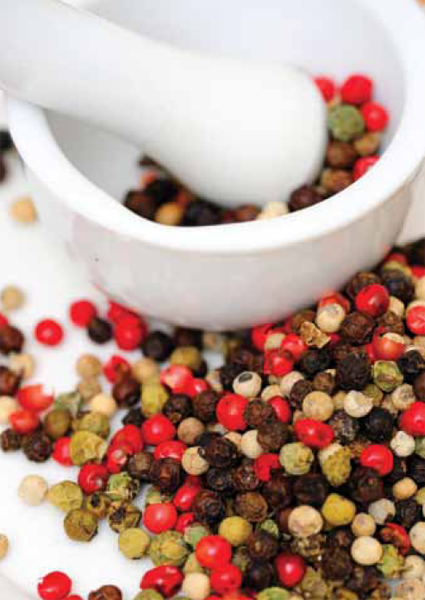
Who put the [ DEVIL ]
in DEVILED EGGS?
INTRODUCTION
IN THE HOPE THAT HER SYSTEM OF COOKERY MAY BE CONSULTED WITH EQUAL ADVANTAGE BY FAMILIES IN TOWN AND IN COUNTRY, BY THOSE WHOSE CONDITION MAKES IT EXPEDIENT TO PRACTISE ECONOMY, AND BY OTHERS WHOSE CIRCUMSTANCES AUTHORIZE A LIBERAL EXPENDITURE, THE AUTHOR SENDS IT TO TAKE ITS CHANCE AMONG THE MULTITUDE OF SIMILAR PUBLICATIONS, SATISFIED THAT IT WILL MEET WITH AS MUCH SUCCESS AS IT MAY BE FOUND TO DESERVE, MORE SHE HAS NO RIGHT TO EXPECT.
Eliza Leslie, Directions for Cookery, in its Various Branches (1840)
WHY DEVILED EGGS and not stuffed mushrooms? Why apple and pumpkin pies, and not peach or blueberry? What is this eclectic mix of dishessome of which might only be eaten in one region of the nation and scorned in another? Needless to say, it is rather a mash-up of various foods, but in a wayhow appropriate.
Thinking about American cookery from its very roots reveals how nearly everything we eat came from Europe with settlers. It also makes very clear the elaborateand sometimes randomupdates and changes that have been made to these dishes.
Brownies were once prepared without chocolate (is a brownie without chocolate really a brownie, you might ask?). Pumpkin pie was made with rosemary, thyme, and apples. Granula, a precursor to today's granola, was hard as a rock, and had to be soaked in milk before it was eaten. Biscuits went from twice-cooked pucks taken on ship journeys because they never became stale (they started out that way), to the flaky, buttery mounds we enjoy today. Peanuts for peanut butter were once boiled, not roasted. And there are dozens of variations on meatloaf; we added the ketchup and the cheese.
About the recipes themselves: I've included many simple ones from the late 1800s and early 1900s. These may have been handed down from early European immigrants or even from ancient Rome, but those printed here represent the first ones published in America. It's fascinating to see how little emphasis was placed on measurements.
Perhaps these old recipes will inspire you to pick half a dozen apples, cut them up, and toss in some sugar to make a pie, without having to roll the dough exactly right or worry about how much liquid will seep from the crust, and so forth. It's quite wonderful to see the words of our past and find a connection with the present through these recipes.
I hope you will enjoy the roundabout journey. Let me know if there's something that absolutely needs to be included next time around!
Ann Treistman
New York City
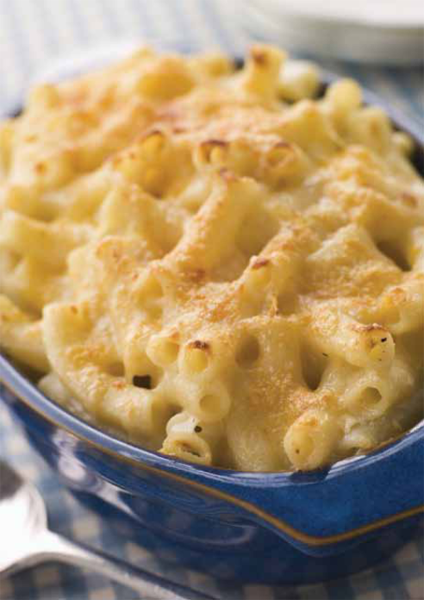
MACARONI AND
CHEESE
IF YOU DON'T LIKE MACARONI AND CHEESE, YOU DON'T
KNOW HOW TO HAVE A GOOD TIME.
Ina Garten, The Barefoot Contessa
MACARONI AND CHEESE is the easiest comfort food you'll ever make. Hot pasta tossed with cheese and butter at its base, the combination appeals to children and adults alike. Yet for such a simple recipe, it's hard to pinpoint exactly where this dish was first created.
Oh, mysterious macaroni. Historians and archaeologists have yet to answer the question: Who invented pasta? The two major theories claim that fresh noodles were first crafted either by ancient Etruscans in Italy or by peasants in ancient China. Other evidence suggests that dried noodles were being sold and consumed by Arab peoples as early as the 5th century CE.
Pasta had made its way north through Europe sometime after the 15th century, when the art of drying noodles was perfected in Italy. Americans were slow to warm to the dish, but the English of the industrial age quickly embraced the time-saving staple. Historical rumor states that macaroni first migrated to the United States when Thomas Jefferson returned from France with the first pasta makers in 1789.
Mary Randolph, a cookbook writer close to Jefferson's family, published an early recipe for macaroni and cheese in her cookbook The Virginia Housewife in 1838. This early support by Jefferson and his family might explain why homemade macaroni and cheese has become a Southern soul food specialty in the United States.

THE DEVIL'S IN
THE DETAILS


There are entire cookbooks devoted to macaroni and cheese. Additions to the genre include shaved truffles, bacon, buttered bread crumbs, diced ham, broccoli, peas, lobster, caramelized onions, pesto, and every kid's favorite addition: hot dogs!
In 1918, another discovery made traditional American macaroni and cheese even easier to make: Velveeta. This cheese product was created by a Swiss immigrant named Emil Frey, for the Monroe Cheese Company in Monroe, New York. What makes this different from regular cheese, is how the whey and curd are bound together so they don't separate at all when heated. This makes for a pretty creamy mac and cheese. Perhaps that's why the Velveeta Cheese Company was made its own company in 1923, and then sold to Kraft Foods in 1927.
Outside the South, macaroni and cheese may be thought of as more blue than yellow. In 1937, the Kraft Cheese Company introduced the first boxed version of macaroni and cheese in blue-and-yellow packaging with the slogan, A meal for 4 in 9 minutes. The timing was perfect. Not only was the boxed dinner a hit on its own, but when World War II ignited just a few years later, Kraft became a great resource for riveting Rosies who were expected to cook after a full day of work.

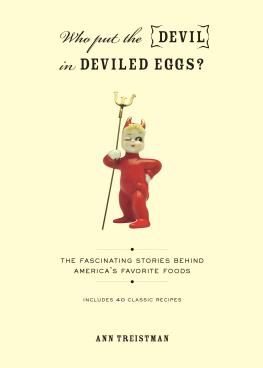

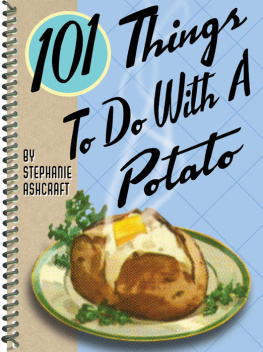



![Willis - Beer: a cookbook: good food made better with beer: [recipes]](/uploads/posts/book/224368/thumbs/willis-beer-a-cookbook-good-food-made-better.jpg)
